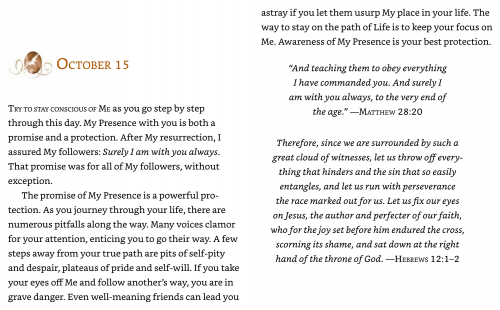Jesus’ Social Program
Thursday, October 15, 2020
Jesus does not directly attack the religious and institutional sin systems of his time until his final action against the money changers in the temple (see Matthew 21:12–13; Mark 11:15–17; Luke 19:45–46). Because of this, Jesus’ primary social justice critique and action are often a disappointment to most radicals and social activists. Jesus’ social program, as far as I can see, is a quiet refusal to participate in almost all external power structures or domination systems. His primary action is a very simple lifestyle, which kept him from being constantly co-opted by those very structures, which I (and Paul) would call the “sin system.”
Jesus seems to have avoided the monetary system as much as possible by using “a common purse” (John 12:6; 13:29). His three-year ministry, in effect, offers free healing and healthcare for any who want them. He consistently treats women with a dignity and equality that is almost unknown in an entirely patriarchal culture. At the end of his life, he surrenders to the punitive systems of both empire and religion by letting them judge, torture, and murder him. He is finally a full victim of the systems that he refused to worship.
Jesus knew the destructive power of what Walter Wink wisely called the “domination system.” [2] These systems usually wield power over the poor, the defenseless, and the outsider in every culture. When he does take on the temple system directly (Mark 11:15–18), Jesus is killed within a week. Contrary to history’s interpretation of Jesus’ practice, he did not concentrate on personal, “flesh” sins nearly as much as the sins of “the world” and “the devil,” but few of us were taught to see him that way.
In fact, Jesus is always forgiving individual sinners, which was a problem for the righteous from the beginning (Luke 7:34). In contrast, I do not once see him “forgiving” the sins of systems and empires. Instead, he just makes them show themselves (Mark 5:8) and name themselves (Mark 5:9)—as did Desmond Tutu in South Africa and Martin Luther King, Jr. in America.
Significantly, Jesus says “Woe to you, Chorazin! Woe to you, Bethsaida!” (Matthew 11:21) and “Alas for you [cultures of the] lawyers, scribes, and Pharisees” (most of Matthew 23 and Luke 11:37‒54). He didn’t warn Bill from Bethsaida, Cathy from Chorazin, or Simon the Pharisee, with whom he engages and eats (Luke 7:36–47). He laments over “Jerusalem, Jerusalem” (Luke 13:34‒35) instead of attacking Jerry from Jerusalem. Today we would call that making an “unfair generalization”; but if what I am saying here has any truth to it, maybe it is a much more truthful and fair diagnosis of the problem. It is Bethsaida and Jerusalem that should fear judgment more than Bill and Jerry! It is “Capernaum” that is to be cast into hell (Matthew 11:23), not necessarily Corey from Capernaum. How did we miss that? It is crucial in our understanding of evil as being, first of all, a social agreement.
